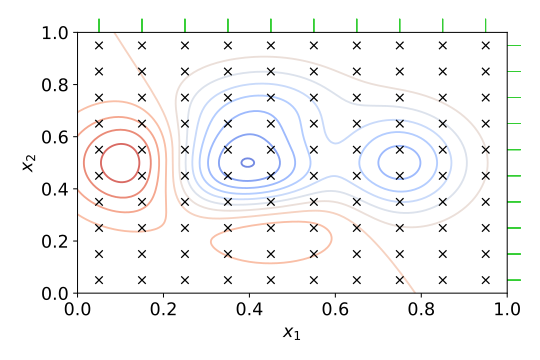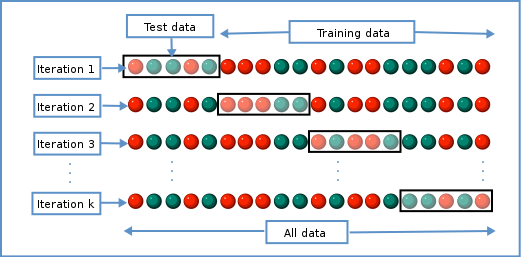This article was published as a part of the Data Science Blogathon
Data-Driven decision-making has large involvement of Machine Learning Algorithms. For a business problem, the professional never rely on one algorithm. One always applies multiple relevant algorithms based on the problem and selects the best model based on the best performance metrics shown by the models. But this is not the end. One can increase the model performance using hyperparameters. Thus, finding the optimal hyperparameters would help us achieve the best-performing model. In this article, we will learn about Hyperparameters, Grid Search, Cross-Validation, GridSearchCV, and the tuning of Hyperparameters in Python.
Hyperparameters for a model can be chosen using several techniques such as Random Search, Grid Search, Manual Search, Bayesian Optimizations, etc. In this article, we will learn about GridSearchCV which uses the Grid Search technique for finding the optimal hyperparameters to increase the model performance.

Table of contents
Hyperparameters vs Parameters
Parameters and Hyperparameters both are associated with the Machine Learning model, but both are meant for different tasks. Let’s understand how they are different from each other in the context of Machine Learning.
Parameters are the variables that are used by the Machine Learning algorithm for predicting the results based on the input historic data. These are estimated by using an optimization algorithm by the Machine Learning algorithm itself. Thus, these variables are not set or hardcoded by the user or professional. These variables are served as a part of model training. Example of Parameters: Coefficient of independent variables Linear Regression and Logistic Regression.
Hyperparameters are the variables that the user specify usually while building the Machine Learning model. thus, hyperparameters are specified before specifying the parameters or we can say that hyperparameters are used to evaluate optimal parameters of the model. the best part about hyperparameters is that their values are decided by the user who is building the model. For example, max_depth in Random Forest Algorithms, k in KNN Classifier.
Understanding Grid Search
Now we know what hyperparameters are, our goal should be to find the best hyperparameters values to get the perfect prediction results from our model. But the question arises, how to find these best sets of hyperparameters? One can try the Manual Search method, by using the hit and trial process and can find the best hyperparameters which would take huge time to build a single model.
For this reason, methods like Random Search, GridSearch were introduced. Here, we will discuss how Grid Seach is performed and how it is executed with cross-validation in GridSearchCV.
Grid Search uses a different combination of all the specified hyperparameters and their values and calculates the performance for each combination and selects the best value for the hyperparameters. This makes the processing time-consuming and expensive based on the number of hyperparameters involved.

Grid Search across Two Parameters (Image by Alexander Elvers from WikiMedia)
Cross-Validation and GridSearchCV
In GridSearchCV, along with Grid Search, cross-validation is also performed. Cross-Validation is used while training the model. As we know that before training the model with data, we divide the data into two parts – train data and test data. In cross-validation, the process divides the train data further into two parts – the train data and the validation data.
The most popular type of Cross-validation is K-fold Cross-Validation. It is an iterative process that divides the train data into k partitions. Each iteration keeps one partition for testing and the remaining k-1 partitions for training the model. The next iteration will set the next partition as test data and the remaining k-1 as train data and so on. In each iteration, it will record the performance of the model and at the end give the average of all the performance. Thus, it is also a time-consuming process.
Thus, GridSearch along with cross-validation takes huge time cumulatively to evaluate the best hyperparameters. Now we will see how to use GridSearchCV in our Machine Learning problem.

K-Fold Cross Validation (Image by Gufosowa from WikiMedia)
How to Apply GridSearchCV?
.GridSearchCV() method is available in the scikit-learn class model_selection. It can be initiated by creating an object of GridSearchCV():
clf = GridSearchCv(estimator, param_grid, cv, scoring)Primarily, it takes 4 arguments i.e. estimator, param_grid, cv, and scoring. The description of the arguments is as follows:
1. estimator – A scikit-learn model
2. param_grid – A dictionary with parameter names as keys and lists of parameter values.
3. scoring – The performance measure. For example, ‘r2’ for regression models, ‘precision’ for classification models.
4. cv – An integer that is the number of folds for K-fold cross-validation.
GridSearchCV can be used on several hyperparameters to get the best values for the specified hyperparameters.
Now let’s apply GridSearchCV with a sample dataset:
Importing the Libraries & the Dataset
Python Code:
Here we are going to use the HeartDiseaseUCI dataset.
Specifying Independent and Dependent Variables
X = df.drop('target', axis = 1)
y = df['target']Splitting the data into train and test set
X_train, X_test, y_train, y_test = train_test_split(X, y, test_size = 0.3, random_state = 42)Building Random Forest Classifier
rfc = RandomForestClassifier()Here, we created the object rfc of RandomForestClassifier().
Initializing GridSearchCV() object and fitting it with hyperparameters
forest_params = [{'max_depth': list(range(10, 15)), 'max_features': list(range(0,14))}]
clf = GridSearchCV(rfc, forest_params, cv = 10, scoring='accuracy')
clf.fit(X_train, y_train)Here, we passed the estimator object rfc, param_grid as forest_params, cv = 5 and scoring method as accuracy in to GridSearchCV() as arguments.
Getting the Best Hyperparameters
print(clf.best_params_)
This will give the combination of hyperparameters along with values that give the best performance of our estimate specified.
Putting it all together
import pandas as pd
from sklearn.ensemble import RandomForestClassifier
from sklearn.model_selection import train_test_split
from sklearn.model_selection import GridSearchCV
from sklearn import metrics
import warnings
warnings.filterwarnings('ignore')
df = pd.read_csv('heart.csv')
X = df.drop('target', axis = 1)
y = df['target']
X_train, X_test, y_train, y_test = train_test_split(X, y, test_size = 0.3, random_state = 42)
rfc = RandomForestClassifier()
forest_params = [{'max_depth': list(range(10, 15)), 'max_features': list(range(0,14))}]
clf = GridSearchCV(rfc, forest_params, cv = 10, scoring='accuracy')
clf.fit(X_train, y_train)
print(clf.best_params_)
print(clf.best_score_)On executing the above code, we get:

Best Params and Best Score of the Random Forest Classifier
Thus, clf.best_params_ gives the best combination of tuned hyperparameters, and clf.best_score_ gives the average cross-validated score of our Random Forest Classifier.
Conclusions
Thus, in this article, we learned about Grid Search, K-fold Cross-Validation, GridSearchCV, and how to make good use of GridSearchCV. GridSearchCV is a model selection step and this should be done after Data Processing tasks. It is always good to compare the performances of Tuned and Untuned Models. This will cost us the time and expense but will surely give us the best results. The scikit-learn API is a great resource in case of any help. It’s always good to learn by doing.
Frequently Asked Questions
A. GridSearchCV (Grid Search Cross-Validation) is a technique used in machine learning to search and find the optimal combination of hyperparameters for a given model. It systematically explores a predefined set of hyperparameter values, creating a “grid” of possible combinations. It then evaluates each combination using cross-validation and selects the one that produces the best performance. GridSearchCV helps in automating the process of hyperparameter tuning, enhancing model performance, and avoiding manual trial-and-error.
A. GridSearchCV is not a library itself, but rather a class provided by the popular Python machine learning library scikit-learn (sklearn). It is part of the sklearn library’s model_selection module. This class is used to perform grid search and cross-validation to find the best hyperparameters for a given machine learning model. By utilizing GridSearchCV, you can efficiently explore different hyperparameter combinations and optimize your model’s performance.
Grid search is a method for hyperparameter optimization that systematically evaluates all possible combinations of hyperparameter values within a predefined grid to find the best-performing set of hyperparameters. It’s a straightforward approach but can be computationally expensive for models with many hyperparameters.
About the Author
Connect with me on LinkedIn Here.
Check out my other Articles Here
You can provide your valuable feedback to me on LinkedIn.
Thanks for giving your time!
The media shown in this article are not owned by Analytics Vidhya and are used at the Author’s discretion.




